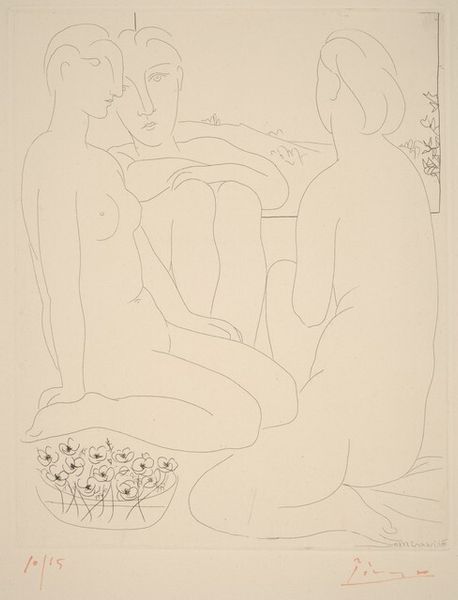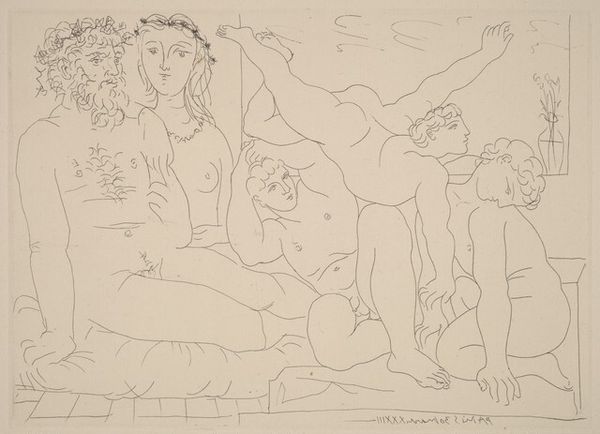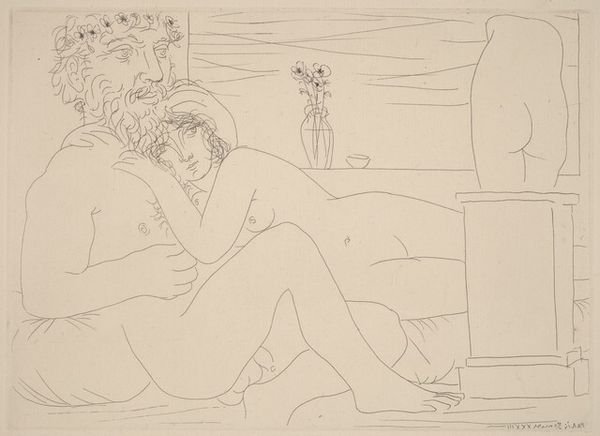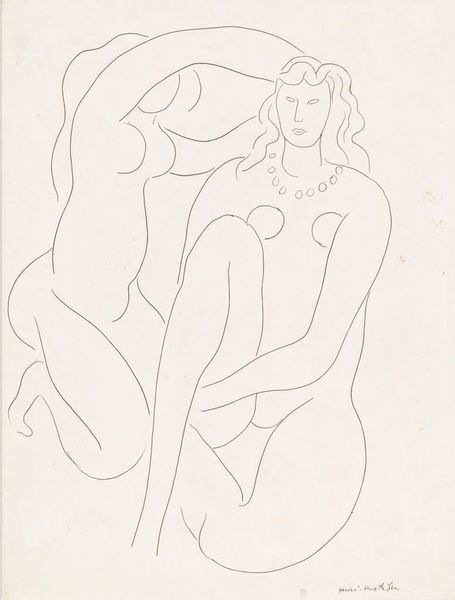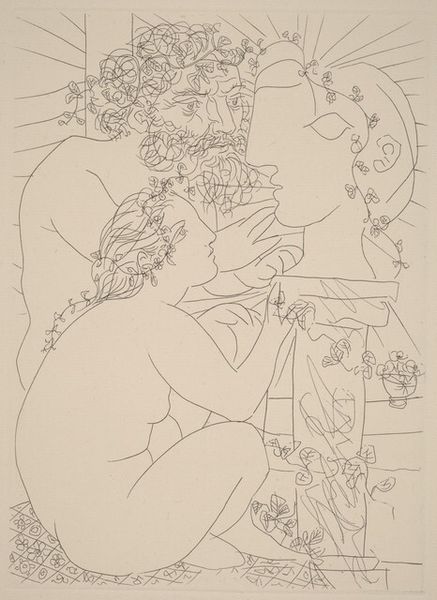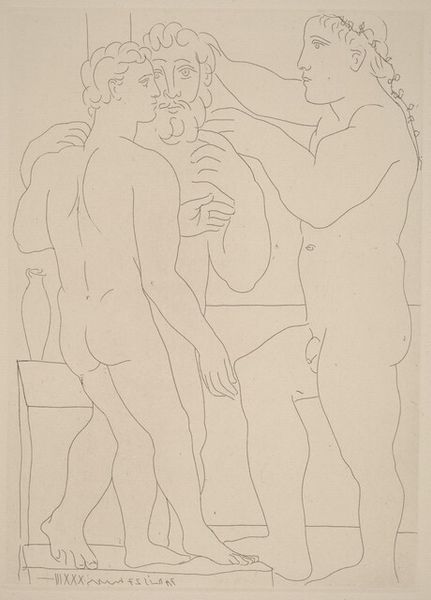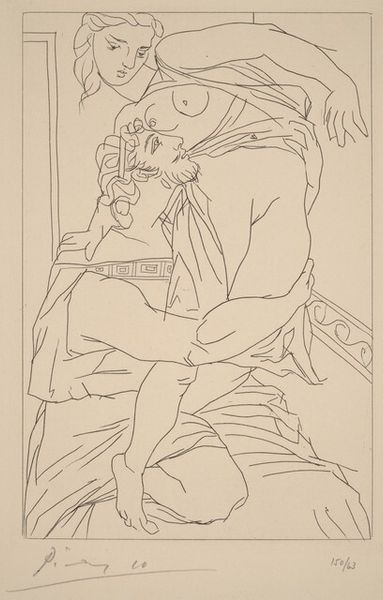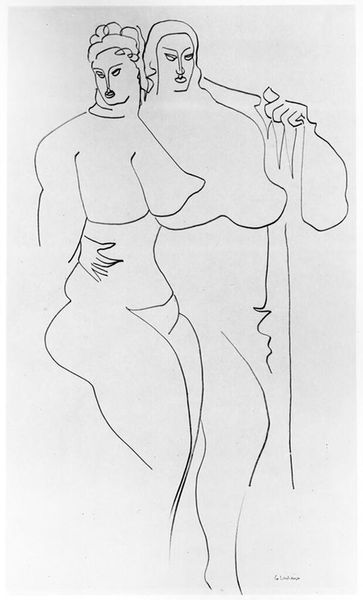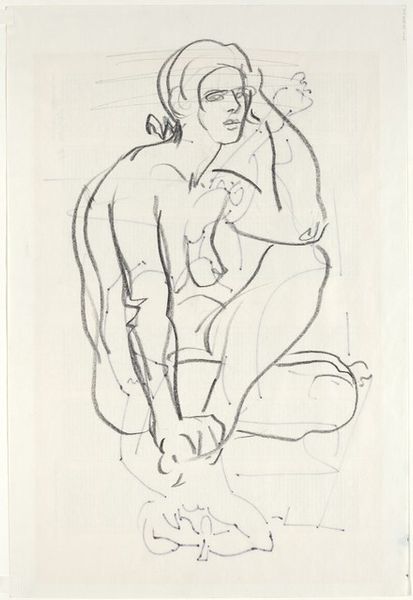
Sculptor Reclining with an Unmasked Model and Her Sculpted Representation (Sculpteur au repos avec modèle démasqué et sa représentation sculptée) 1933
0:00
0:00
drawing, print
#
drawing
# print
#
figuration
#
line
#
history-painting
#
nude
#
modernism
Dimensions: plate: 26.7 x 19.3 cm (10 1/2 x 7 5/8 in.) sheet: 50.1 x 38.5 cm (19 3/4 x 15 3/16 in.)
Copyright: National Gallery of Art: CC0 1.0
Editor: Here we have Picasso’s "Sculptor Reclining with an Unmasked Model and Her Sculpted Representation" from 1933. It’s a drawing or print, and the thing that immediately jumps out at me is the incredibly spare use of line to define these figures. How do you interpret this work through that formal lens? Curator: Indeed. Note how the artist exploits the economy of line. Observe the purity and directness, how each contour strives for autonomy yet functions interdependently. We discern, via compositional strategy, a fragmented tableau. Consider the implied spatial relationships, almost cubist, through mere juxtaposition of the figures rather than classical modeling or perspectival illusionism. Editor: I see what you mean about the almost cubist space; the figures are distinct, and the relationships seem psychological, not strictly physical. It’s as if they are coexisting in one canvas yet have no true relation with one another. Curator: Precisely. Examine how the lines delineate mass while denying it true volume, an intentional paradox that stimulates intellectual engagement beyond simple observation. How does this flatness challenge our reading of the work as narrative or allegory? Is it simply line that generates forms for line’s sake alone? Editor: It pushes me away from reading this image as an intimate scene to seeing it as a study of line and form—almost a diagram about bodies in space rather than bodies themselves. So it comes across as a formal exercise. Curator: An astute observation! The lack of traditional rendering propels us toward contemplating the line itself, as an aesthetic object devoid of referential weight, in which case the narrative dissolves into purely structural relationships. Editor: So, looking at it that way makes the flatness and sparseness less of a deficit and more of a method of making you think about line itself as form. Curator: Precisely. One now observes that even supposed negative space is vital. Editor: That makes sense. Thanks.
Comments
No comments
Be the first to comment and join the conversation on the ultimate creative platform.
